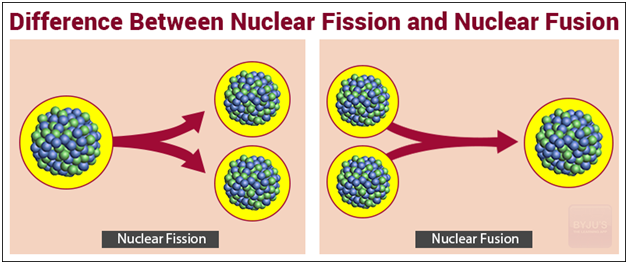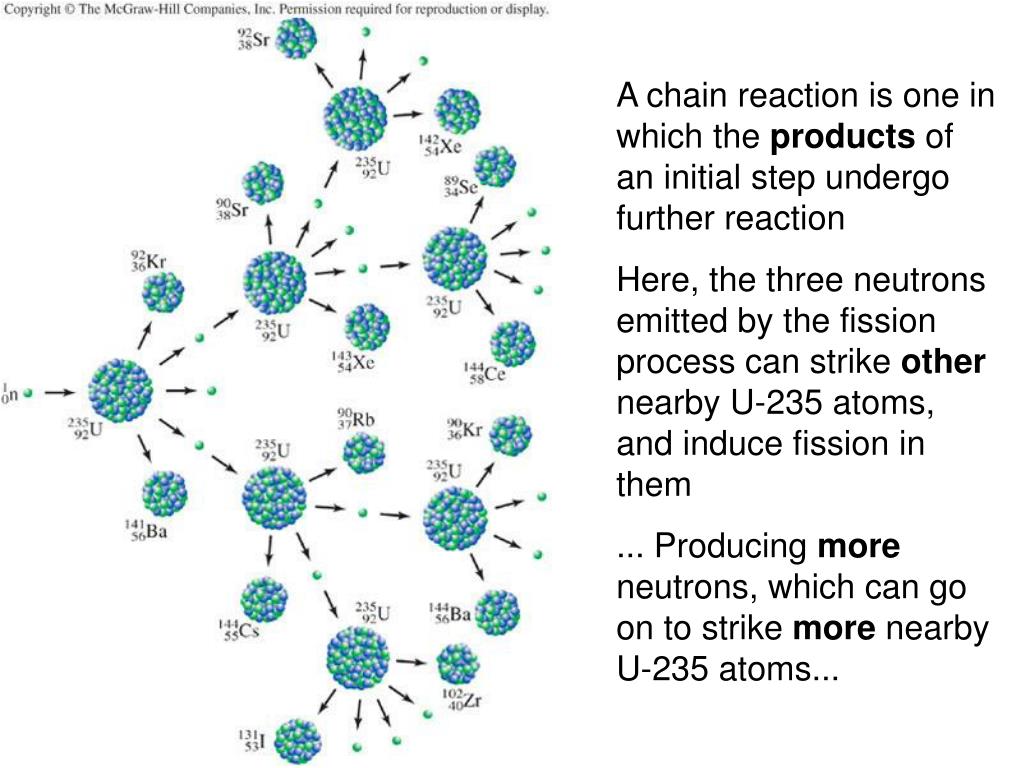

Limited risk of proliferation: Fusion doesn't employ fissile materials like uranium and plutonium. The activation of components in a fusion reactor is anticipated to be low enough for the materials to be recycled or reused within 100 years, depending on the materials used in the "first-wall" facing the plasma. No long-lived radioactive waste: Nuclear fusion reactors produce no high activity, long-lived nuclear waste. Its major by-product is helium: an inert, non-toxic gas. No CO₂: Fusion doesn't emit harmful substances like carbon dioxide or other greenhouse gases into the atmosphere.
WHICH CHANGE OCCURS DURING A NUCLEAR FISSION REACTION HOW TO
(Terrestrial reserves of lithium would permit the operation of fusion power plants for more than 1,000 years, while sea-based reserves of lithium, used in a fusion reactor in its Li-6 isotope form, would fulfil needs for millions of years.) A critical challenge is how to breed and recover tritium reliably in a fusion device.

Deuterium can be distilled from all forms of water, while tritium will be produced during the fusion reaction as fusion neutrons interact with lithium. Millions of years: Fusion in ITER will require two elements: deuterium and tritium. Fusion has the potential to provide the kind of baseload energy needed to provide electricity to our cities and our industries. The following advantages make fusion worth pursuing.Ībundant energy: Fusing atoms together in a controlled way releases nearly four million times more energy than a chemical reaction such as the burning of coal, oil or gas and four times as much as nuclear fission reactions (at equal mass). The fossil fuels that shaped 19th and 20th century civilization can only be relied on at the cost of greenhouse gases and pollution.Ī new large-scale, sustainable and carbon-free form of energy is urgently needed. © EUROfusion)The next decades are crucially important to putting the world on a path of reduced greenhouse gas emissions.īy the end of the century, demand for energy will have tripled under the combined pressure of population growth, increased urbanization and expanding access to electricity in developing countries. (An artist's impression of the European fusion power plant design. a number of advantages make fusion worth pursuing. Sustainability, abundant fuels, no long-lived waste.


 0 kommentar(er)
0 kommentar(er)
